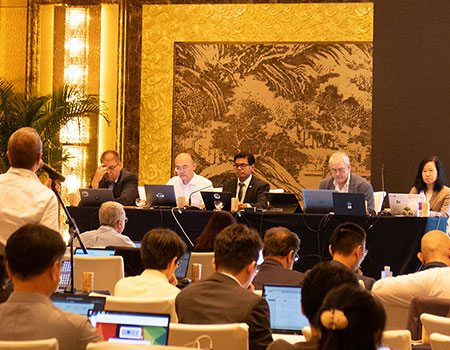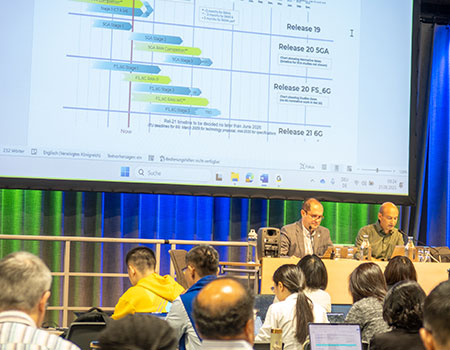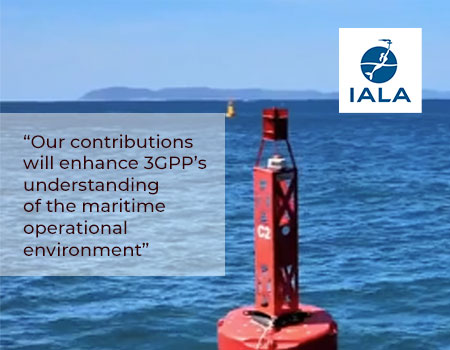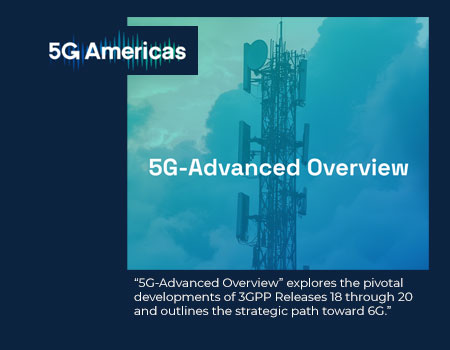The path to 5G: as much evolution as revolution

May 10, 2016
The following article considers the path to 5G - concluding that the new radio from 3GPP will initially embrace LTE as the anchor technology - prior to the industry moving to full blown 5G.
A personal view - by Keith Mallinson - for 3GPP:
The introduction of 5G will be as much the result of relentless and extensive improvements in LTE as it is a technology revolution. While the prospect of a next generation network opens up possibilities for quite dramatic changes, such as an entirely new air interface (i.e. other than OFDMA-based) or fixed transport layer (e.g. based on Information Centric Networking (ICN) rather than IP), it also prompts development of numerous incremental improvements. Many of these are already in the pipeline for development, standardisation and deployment.
Whether one calls it 4.5G, pre5G or uses the official 3GPP term LTE-Advanced Pro; standard-compliant LTE technology that builds upon current and completed 3GPP Releases (8-14), along with the first drop of New Radio air interface features with Release 15 in 2018, will form 5G in its Phase 1 deployments commencing 2020. Compliance with ITU’s IMT-2020 requirements is not anticipated until the completion of 3GPP Release 16 at the end of 2019.
Expanded visions for 2020
In June 2012, I published an article on 3GPP’s website outlining a “2020 vision for LTE” with 3GPP Release 12 which was largely completed in March 2015. Only one year later it is still early days for commercial implementation of Rel-12 features. However, momentum is clearly and strongly behind what is being provided with many enhancements to LTE in a succession of new releases. LTE has already been significantly improved since its inception with Rel-8 and with further improvements in LTE-Advanced, as initially standardised in Rel-10. My article stated that in order to increase performance a desired 1,000-fold in capacity would require a combination of, for example, three times more spectrum, six times more spectrum efficiency and 56 times increased network density. My recent analysis is that we are on-track for this level of usage growth over the 15 years from 2010 to 2025.
Carrier aggregation (CA) in particular, along with new spectrum made available to exploit it, is alleviating the network capacity crunch. CA improves maximum speeds and capacity by increasing total spectrum and trunking efficiency. It was introduced with LTE-Advanced in 3GPP Rel-10 and enhanced subsequently. Among various additional capabilities in Rel-11 and Rel-12, mobile broadband data performance has increased to maximum speeds of 4Gbps in the downlink and 1.5Gbps in the uplink with multiple 20MHz channels. MIMO and higher-order modulation increase spectral efficiency in bits per second per Hertz per cell. Small cells and beamforming can increase the effective number of cells.
 5G will bring a whole lot more by supplementing what is being achieved with the evolution of LTE and including some radically new capabilities. The features and performance specifications for 5G have not yet been formally defined: however; there is already significant consensus emerging with regard to which new capabilities will be provided, what the key performance parameters are and by approximately how much performance might be increased. 5G is depicted as in Figure 1 with three principal dimensions for performance. 5G will not only be about eMBB (enhanced Mobile Broadband) – mMTC (massive Machine Type Communications) and URLLC (Ultra-Reliable and Low Latency Communications) seemingly have a similar footing in long-term visions of what 5G might ultimately become. However, what actually gets deployed is a commercial decision for equipment vendors and operators. What is actually used is largely down to consumers.
5G will bring a whole lot more by supplementing what is being achieved with the evolution of LTE and including some radically new capabilities. The features and performance specifications for 5G have not yet been formally defined: however; there is already significant consensus emerging with regard to which new capabilities will be provided, what the key performance parameters are and by approximately how much performance might be increased. 5G is depicted as in Figure 1 with three principal dimensions for performance. 5G will not only be about eMBB (enhanced Mobile Broadband) – mMTC (massive Machine Type Communications) and URLLC (Ultra-Reliable and Low Latency Communications) seemingly have a similar footing in long-term visions of what 5G might ultimately become. However, what actually gets deployed is a commercial decision for equipment vendors and operators. What is actually used is largely down to consumers.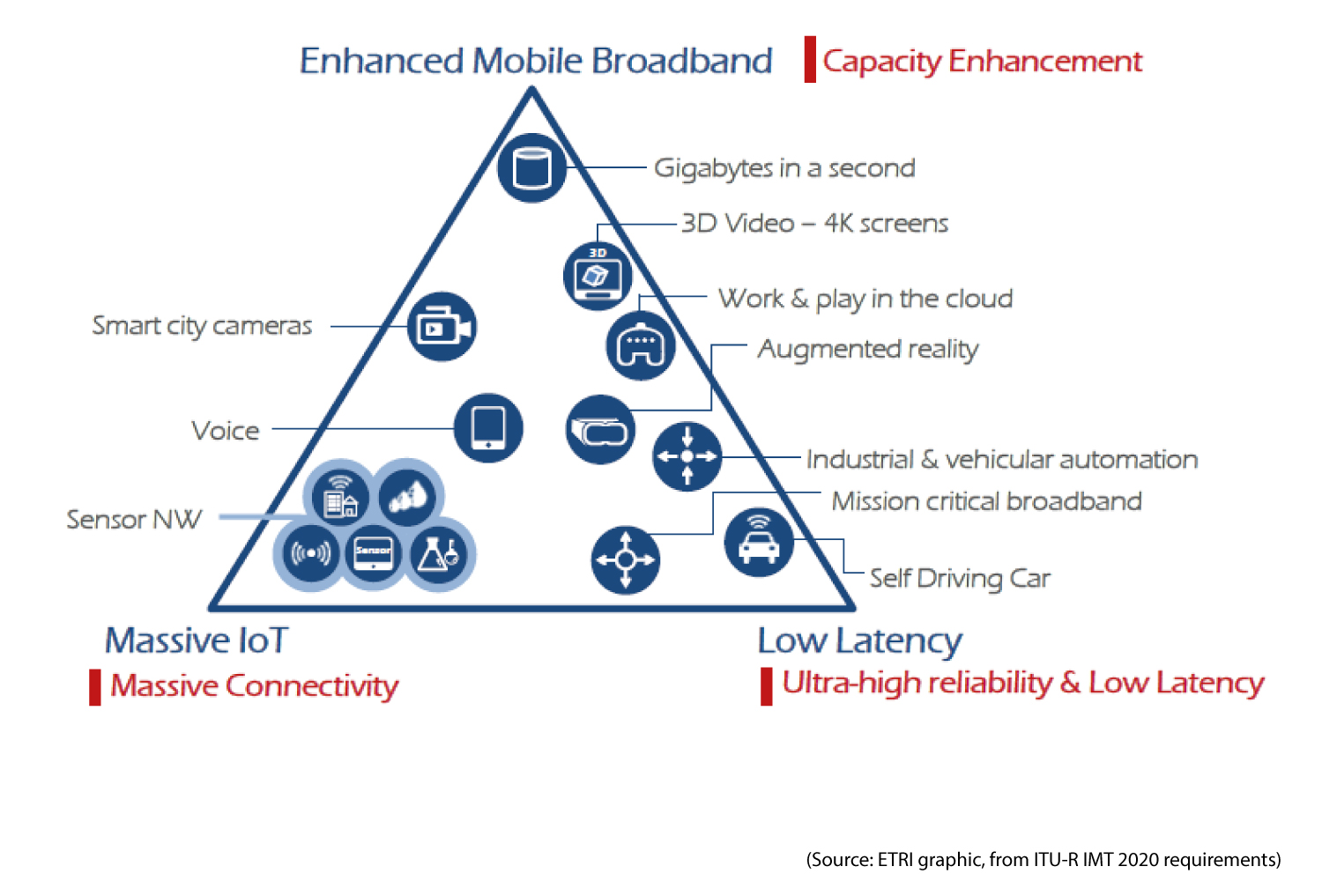
Figure 1: Three dimensions to performance improvements with usage scenarios for 2020 and beyond
For the time being, evolution of mobile broadband will remain most important because ongoing growth in demand for it is proven to be strong and profitable. Mobile broadband users with smartphones will therefore continue to be the primary basis for technology development of both LTE today and 5G tomorrow. There is also well-founded optimism for massively increasing the number of end devices (up to 40 per household, perhaps), greatly improving reliability for mission-critical or safety-dependent services and reducing latency by an order of magnitude. However; demand for these capabilities and improvements is less certain and will need to be proven economically as well as technically. Not all users or use cases will require the highest capacities or highest levels of performance on all three dimensions; but 5G networks as foreseen will need to meet performance requirements along all three dimensions so that they can accommodate all comers.
Report card on LTE and its improvements
LTE is an astounding success. According the Global mobile Suppliers Association, by April 2016, 494 LTE networks are commercially launched in 162 countries. The majority of smartphone models on sale support LTE with 5,104 LTE user devices launched on the market by 417 manufacturers. There were more than one billion subscribers using LTE by yearend 2015.
Certain improvements to LTE are also gaining significant traction. Also according to the GSA, by January 2016 there were 116 commercially launched LTE-Advanced systems in 57 countries. Carrier aggregation remains the most popular enhancement to R-8 LTE and Voice over LTE (VoLTE) is also gaining significant traction: 46 operators had commercially launched HD voice service using VoLTE in 29 countries by January 2016. Commercial implementation of other capabilities has not yet been so strong. Deployment of HetNets with various features coordinating radio resources among large and small cells has been lacklustre in comparison to the above so far. Challenges include the significant difficulties and costs in obtaining rights of way and planning consents to deploy large numbers of small cells in urban areas and in connecting them by fibre for user data and signalling including, for example, that in latency-sensitive Coordinated Multi-Point (CoMP) transmission and reception.
Enhancing LTE-Advanced further in anticipation of 5G
 LTE and its improvements are predominantly about enhancing mobile broadband with substantial increases in peak speeds and capacities; but with only moderate increases in the number of users or devices. For example, the figure of one billion LTE smartphone users already will probably not more than quadruple in the next decade. Scenarios pertaining to eMBB (enhanced Mobile Broadband) use cases include indoor hotspot, dense urban, rural, urban macro, and high speed.
LTE and its improvements are predominantly about enhancing mobile broadband with substantial increases in peak speeds and capacities; but with only moderate increases in the number of users or devices. For example, the figure of one billion LTE smartphone users already will probably not more than quadruple in the next decade. Scenarios pertaining to eMBB (enhanced Mobile Broadband) use cases include indoor hotspot, dense urban, rural, urban macro, and high speed.
Momentum is being maintained with LTE Advanced Pro which is standardised from Rel-13 onwards. Also described as 4.5G or pre5G, Rel-13 to Rel-15 can be seen as intermediate steps on the path to 5G in compliance with the ITU’s IMT 2020 requirements. These will add elements that significantly improve upon existing LTE-based capabilities. Publicly announced priorities by leading vendors vying for 5G mindshare include massive MIMO, MUSA (multi-user shared access) and UDN (ultra-dense network). Technology supplier and operator strategies are also to introduce different elements step-by-step in compliance with LTE as specified in these new releases, and in response to expected customer requirements for 5G.
Emphasis so far in mobile broadband developments has been mostly on downlink performance. With popularity of social media and with so much content, including bandwidth-hungry video, increasingly being generated by consumers, uplink performance is also becoming more and more important. Current 3GPP work items include providing higher-order modulation and coding with 256 QAM in the uplink. It could be possible to double uplink user data rates with this, for example, in small cell deployments. LTE specifications currently limit the uplink to 64 QAM and commercially-available mobile devices are almost invariably limited to 16 QAM.
As mentioned in my 2012 article, increasing spectrum is one of the three ways in which capacity (and speeds) can be increased, along with improving spectrum efficiency and increasing network density. As well as technical capabilities to add spectrum, operators face the practical problem of obtaining and paying for this scarce resource. The ability to combine unlicensed spectrum with their licensed spectrum is a highly attractive opportunity. This can be achieved by link aggregation with LWA (LTE-WLAN Aggregation) and by carrier aggregation of LTE in both licensed and unlicensed bands with LAA (Licensed-Assisted Access). These features are included in Rel-13 onwards.
There is significant enthusiasm by some mobile operators and broadcasters for MBMS (Multimedia Broadcast Multicast Service) and eMBMS (enhanced MBMS). Attending live events including pop concerts and sports games is popular with consumers; but they also want to use multimedia services including replays, and video streams from various camera angles while at these events. The spectator density and commonalities in the video content consumed make multicasting compelling. MBMS in general is only nascent so far. Nevertheless, standardisation work is ongoing with improvements anticipated in Rel-14.
Reductions in network latency are required for various applications including those envisaged for 5G, such as the tactile Internet and augmented reality which might need extremely low latency of as little as 1 millisecond. However, somewhat lower latency than current levels is also extremely desirable for more conventional mobile broadband usage. Many traditional applications including those hosted remotely on the web or in the cloud are quite “chatty” with numerous short interactions between host and client. Perceived speed can be as much limited by latencies between client and server as it is by the data rate of the link. LTE latency figures vary quite widely among different networks with figures up to 40 milliseconds quite common. This relatively high latency can result from the routing of data packets through many network elements before they reach a network gateway to the Internet. From that point onwards, there will be additional packet-routing delays which are outside of the operator’s control. RAN Working Group 1 is already studying the possibility of shortening the LTE subframe or TTI (Transmission Time Interval). RAN WG2 is seeking to identify additional latency reductions at Layer 2 of the protocol stack.
Multiuser Superposition Transmission (MUST), Multi-user MIMO (MU-MIMO) and FD-MIMO (Full Dimensional MIMO) all provide significant spacial-domain enhancements in LTE capabilities. The latter employs a two-dimensional antenna array to provide multi-user beam forming in vertical and horizontal directions. These developments are steps toward the massive antenna arrays that will be used to exploit the short wavelength centimetre and millimetre spectrum anticipated to be allocated following the WRC 2019 conference.
Although LTE evolution is mostly about eMBB, LTE evolution is also pursuing some of the 5G use cases with the specific performance characteristics required for these. A downscaled User Equipment (UE) Category 0 of 1Mbps was introduced in Rel-12 for IoT applications, for example. This and subsequent NB-IoT (narrowband IoT) developments in LTE might never come close to the extreme performance requirements anticipated for 5G with 10-year battery life and extremely good propagation (in frequencies below 1 GHz). Nevertheless, LTE-based solutions might pre-emptively seize a large share of the low-hanging fruit in IoT emerging applications.
These enhancements are more than cosmetic nips and tucks to aging technologies. They are the modified DNA from which 5G will also be built.
LTE and 5G divergence
LTE and 5G share much more than the common 3GPP release schedule shown in Figure 2. It is inevitable that much of what is being developed for LTE will also significantly contribute to 5G and there will be significant complementarities and interdependencies, if not compatibilities between the two. For example, 5G might be dependent on low-band LTE for coverage and control channel signalling where such spectrum is not directly available for 5G.
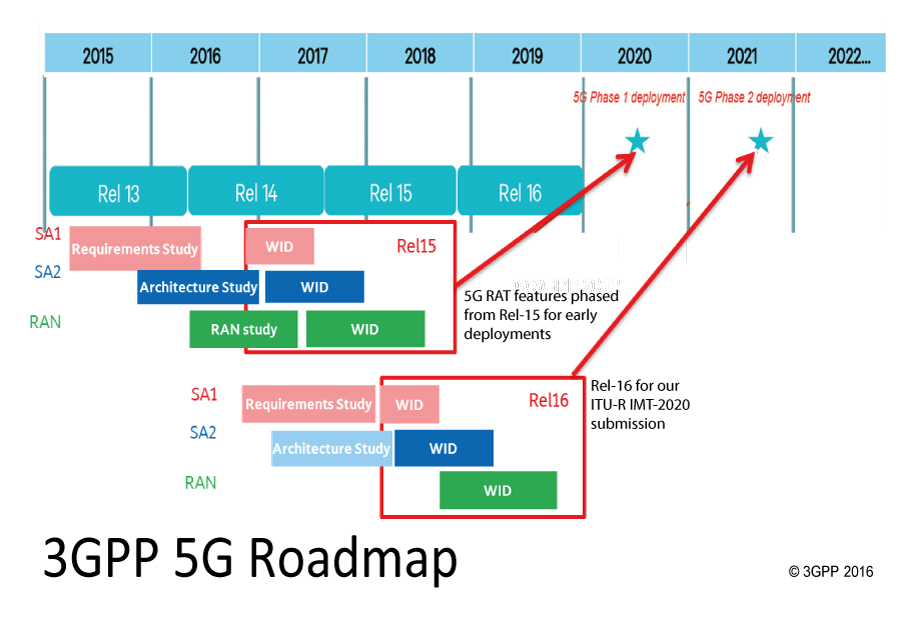
Figure 2: The 3GPP route to 5G
However, the transition to 5G also opens up the possibility of introducing an entirely new air interface; also referred to as New Radio (NR), and creating network architecture and designs that are not necessarily backward compatible with LTE. NR remains a study item in advance of preliminary RAN Working Group presentations and discussion on potential NR waveforms as well as channel modelling.
There are significant tradeoffs among different ways of implementing NR. For example, dual-connectivity, of the UE to the RAN, can improve performance but this requires compromise. The robustness of LTE control mechanisms (such as mobility, resources management, scheduling, etc.) at lower frequencies makes it very attractive as an anchor technology for the different access techniques foreseen in 5G. However, this option comes at a high cost with the need to adapt 5G control mechanisms to the specifics of LTE radio access; and the need to evolve LTE towards the direction set by 5G.
With loose interworking with LTE the NR access technology operating in a low frequency band can serve as the primary carrier carrying control signals or uplink traffic for NR access technology in the high band deployed in dense areas for higher capacity. Free from backward compatibility restrictions, NR can be designed to operate as the control layer for high frequency deployments with appropriate frame structure and provision for carrying control signals for the high-frequency user plane. However, even in this configuration, the NR technology can still be coupled with already existing LTE deployments in dual connectivity mode where necessary to increase wide area network throughputs.
About the Author
Keith Mallinson is a leading industry expert, analyst and consultant. Solving business problems in wireless and mobile communications, he founded consulting firm WiseHarbor in 2007.
Other articles by Keith Mallinson:
- Duct and pole access essential for 1000-times growth with 5G, March 9, 2016
- LTE-Advanced is bringing more than just carrier aggregation in 3GPP Release 12, August 2014
- The 2020 vision for LTE, June 20, 2012

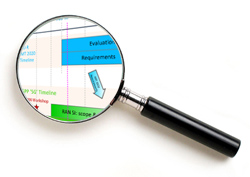
 3GPP News
3GPP News
